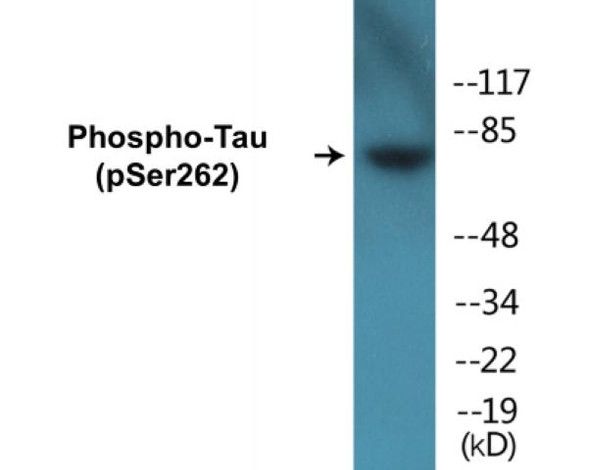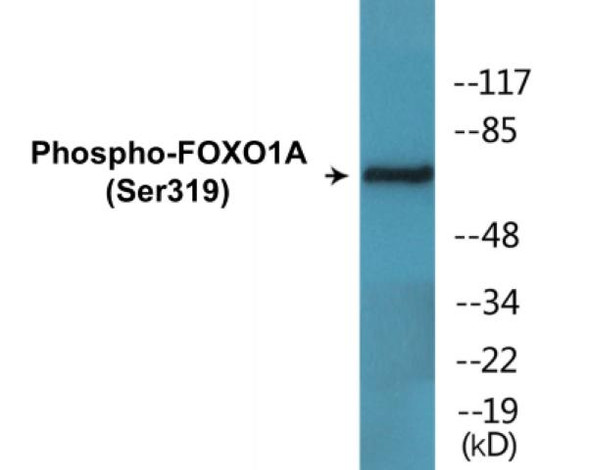Description
VEGFR1 (Phospho-Tyr1333) Cell-Based ELISA Kit
The VEGFR1 (Phospho-Tyr1333) Cell-Based ELISA Kit is a convenient, lysate- free, high throughput and sensitive assay kit that can monitor VEGFR1 phosphorylation and expression profile in cells. The kit can be used for measuring the relative amounts of phosphorylated VEGFR1 in cultured cells as well as screening for the effects that various treatments, inhibitors (ie. siRNA or chemicals), or activators have on VEGFR1 phosphorylation.
How does our VEGFR1 (Phospho-Tyr1333) Fluorometric Cell-Based ELISA Kit work?
Qualitative determination of VEGFR1 (Phospho-Tyr1333) concentration is achieved by an indirect ELISA format. In essence, VEGFR1 (Phospho-Tyr1333) is captured by VEGFR1 (Phospho-Tyr1333)-specific primary (1°) antibodies while Dye 1-conjugated and Dye 2-conjugated secondary (2°) antibodies bind the Fc region of the 1° antibody. Through this binding, the dye conjugated to the 2° antibody can emit light at a certain wavelength given proper excitation, hence allowing for a fluorometric detection method. Due to the qualitative nature of the Cell-Based ELISA, multiple normalization methods are needed:
| 1. | A monoclonal antibody specific for human GAPDH is included to serve as an internal positive control in normalizing the target RFU values. |
| 2. | An antibody against the nonphosphorylated counterpart of VEGFR1 (Phospho-Tyr1333) is also provided for normalization purposes. The RFU values obtained for non-phosphorylated VEGFR1 can be used to normalize the RFU value for phosphorylated VEGFR1. |
VEGFR1 (Phospho-Tyr1333) Fluorometric Cell-Based ELISA Kit -Information
| Product Name: | VEGFR1 (Phospho-Tyr1333) Fluorometric Cell-Based ELISA Kit |
| Product Code/SKU: | FBCAB00095 |
| Description: | The VEGFR1 (Phospho-Tyr1333) Fluorometric Cell-Based Phospho ELISA Kit is a convenient, lysate-free, high throughput and sensitive assay kit that can monitor VEGFR1 (Phospho-Tyr1333) protein phosphorylation and expression profile in cells. The kit can be used for measuring the relative amounts of phosphorylated VEGFR1 (Phospho-Tyr1333) in cultured cells as well as screening for the effects that various treatments, inhibitors (ie. siRNA or chemicals, or activators have on FLT1 phosphorylation. |
| Dynamic Range: | > 5000 Cells |
| Detection Method: | Fluorometric |
| Storage/Stability: | 4°C/6 Months |
| Reactivity: | Human, Mouse, Rat |
| Assay Type: | Cell-Based ELISA |
| Database Links: | Gene ID: 2321, UniProt ID: P17948, OMIM #: 165070, Unigene #: Hs.654360 |
| Format: | Two 96-Well Plates |
| NCBI Gene Symbol: | FLT1 |
| Sub Type: | Phospho |
| Target Name: | Phospho-VEGFR1 (Tyr1333) |
Kit Principle
Figure: Schematic representation of Assay Genie Cell-Based Fluorometric ELISA principle
Kit components | Quantity |
| 96-Well Black Cell CultureClear-Bottom Microplate | 2 plates |
| 10X TBS | 24 ml |
| Quenching Buffer | 24 ml |
| Blocking Buffer | 50 ml |
| 15X Wash Buffer | 50 ml |
| Primary Antibody Diluent | 12 ml |
| 100x Anti-Phospho Target Antibody | 60 µl |
| 100x Anti-Target Antibody | 60 µl |
| Anti-GAPDH Antibody | 110 µl |
| Dye-1 Conjugated Anti-Rabbit IgG Antibody | 6 ml |
| Dye-2 Conjugated Anti-Mouse IgG Antibody | 6 ml |
| Adhesive Plate Seals | 2 seals |
Additional equipment and materials required
The following materials and/or equipment are NOT provided in this kit but are necessary to successfully conduct the experiment:
- Fluorescent plate reader with two channels at Ex/Em: 651/667 and 495/521
- Micropipettes capable of measuring volumes from 1 µl to 1 ml
- Deionized or sterile water (ddH2O)
- 37% formaldehyde (Sigma Cat# F-8775) or formaldehyde from other sources
- Squirt bottle, manifold dispenser, multichannel pipette reservoir or automated microplate washer
- Graph paper or computer software capable of generating or displaying logarithmic functions
- Absorbent papers or vacuum aspirator
- Test tubes or microfuge tubes capable of storing ≥1 ml
- Poly-L-Lysine (Sigma Cat# P4832 for suspension cells)
- Orbital shaker (optional)
Kit Protocol
This is a summarized version of the kit protocol. Please view the technical manual of this kit for information on sample preparation, reagent preparation and plate lay out.
| 1. | Seed 200 µl of desired cell concentration in culture medium into each well of the 96-well plates. For suspension cells and loosely attached cells, coat the plates with 100 µl of 10 µg/ml Poly-L-Lysine (not included) to each well of a 96-well plate for 30 minutes at 37°C prior to adding cells. |
| 2. | Incubate the cells for overnight at 37°C, 5% CO2. |
| 3. | Treat the cells as desired. |
| 4. | Remove the cell culture medium and rinse with 200 µl of 1x TBS, twice. |
| 5. | Fix the cells by incubating with 100 µl of Fixing Solution for 20 minutes at room temperature. The 4% formaldehyde is used for adherent cells and 8% formaldehyde is used for suspension cells and loosely attached cells. |
| 6. | Remove the Fixing Solution and wash the plate 3 times with 200 µl 1x Wash Buffer for 3 minutes. The plate can be stored at 4°C for a week. |
| 7. | Add 100 µl of Quenching Buffer and incubate for 20 minutes at room temperature. |
| 8. | Wash the plate 3 times with 1x Wash Buffer for 3 minutes each time. |
| 9. | Dispense 200 µl of Blocking Buffer and incubate for 1 hour at room temperature. |
| 10. | Wash 3 times with 200 µl of 1x Wash Buffer for 3 minutes each time. |
| 11. | Add 50 µl of Primary Antibody Mixture P to corresponding wells for VEGFR1 (Phospho-Tyr1333) detection. Add 50 µl of Primary Antibody Mixture NP to the corresponding wells for total VEGFR1 detection. Cover the plate with parafilm and incubate for 16 hours (overnight) at 4°C. If the target expression is known to be high, incubate for 2 hours at room temperature. |
| 12. | Wash 3 times with 200 µl of 1x Wash Buffer for 3 minutes each time. |
| 13. | Add 50 ul of Secondary Antibody Mixture to corresponding wells and incubate for 1.5 hours at room temperature in the dark. |
| 14. | Wash 3 times with 200 µl of 1x Wash Buffer for 3 minutes each time. |
| 15. | Read the plate(s) at Ex/Em: 651/667 (Dye 1) and 495/521 (Dye 2). Shield plates from direct light exposure. |
| 16. | Wash 3 times with 200 µl of 1x Wash Buffer for 5 minutes each time. |
VEGFR1 (Phospho-Tyr1333) - Protein Information
| UniProt Protein Function: | VEGFR1: a receptor tyrosine kinase of the VEGFR family. Receptor for VEGF, VEGFB and PGF. The VEGF-kinase ligand/receptor signaling system plays a key role in vascular development and regulation of vascular permeability. Two splice variant isoforms have been described. Isoform SFlt1 may have an inhibitory role in angiogenesis. |
| UniProt Protein Details: | Protein type:Protein kinase, TK; EC 2.7.10.1; Protein kinase, tyrosine (receptor); Kinase, protein; Membrane protein, integral; TK group; VEGFR family Chromosomal Location of Human Ortholog: 13q12 Cellular Component: extracellular space; focal adhesion; integral to plasma membrane; plasma membrane; receptor complex; endosome Molecular Function:identical protein binding; vascular endothelial growth factor receptor activity; protein binding; growth factor binding; transmembrane receptor protein tyrosine kinase activity; ATP binding Biological Process: cell migration; peptidyl-tyrosine phosphorylation; protein amino acid autophosphorylation; positive regulation of phosphoinositide 3-kinase activity; positive regulation of vascular endothelial growth factor receptor signaling pathway; positive regulation of phosphoinositide 3-kinase cascade; patterning of blood vessels; monocyte chemotaxis; positive regulation of MAP kinase activity; positive regulation of angiogenesis; positive regulation of MAPKKK cascade; positive regulation of cell proliferation; blood vessel morphogenesis; embryonic morphogenesis; sprouting angiogenesis; cell differentiation; vascular endothelial growth factor receptor signaling pathway; transmembrane receptor protein tyrosine kinase signaling pathway; positive regulation of cell migration |
| NCBI Summary: | This gene encodes a member of the vascular endothelial growth factor receptor (VEGFR) family. VEGFR family members are receptor tyrosine kinases (RTKs) which contain an extracellular ligand-binding region with seven immunoglobulin (Ig)-like domains, a transmembrane segment, and a tyrosine kinase (TK) domain within the cytoplasmic domain. This protein binds to VEGFR-A, VEGFR-B and placental growth factor and plays an important role in angiogenesis and vasculogenesis. Expression of this receptor is found in vascular endothelial cells, placental trophoblast cells and peripheral blood monocytes. Multiple transcript variants encoding different isoforms have been found for this gene. Isoforms include a full-length transmembrane receptor isoform and shortened, soluble isoforms. The soluble isoforms are associated with the onset of pre-eclampsia.[provided by RefSeq, May 2009] |
| UniProt Code: | P17948 |
| NCBI GenInfo Identifier: | 143811474 |
| NCBI Gene ID: | 2321 |
| NCBI Accession: | P17948.2 |
| UniProt Secondary Accession: | P17948,O60722, A3E342, A3E344, A8KA71, B0LPF1, B2BF46 B2BF47, B2BF48, B3FR89, B5A923, F5H5L6, |
| UniProt Related Accession: | P17948 |
| Molecular Weight: | 41,175 Da |
| NCBI Full Name: | Vascular endothelial growth factor receptor 1 |
| NCBI Synonym Full Names: | fms-related tyrosine kinase 1 |
| NCBI Official Symbol: | FLT1 |
| NCBI Official Synonym Symbols: | FLT; FLT-1; VEGFR1; VEGFR-1 |
| NCBI Protein Information: | vascular endothelial growth factor receptor 1; fms-like tyrosine kinase 1; tyrosine-protein kinase FRT; tyrosine-protein kinase receptor FLT; vascular permeability factor receptor; fms-related tyrosine kinase 1 (vascular endothelial growth factor/vascular permeability factor receptor) |
| UniProt Protein Name: | Vascular endothelial growth factor receptor 1 |
| UniProt Synonym Protein Names: | Fms-like tyrosine kinase 1; FLT-1; Tyrosine-protein kinase FRT; Tyrosine-protein kinase receptor FLT; FLT; Vascular permeability factor receptor |
| Protein Family: | Vascular endothelial growth factor receptor |
| UniProt Gene Name: | FLT1 |
| UniProt Entry Name: | VGFR1_HUMAN |







